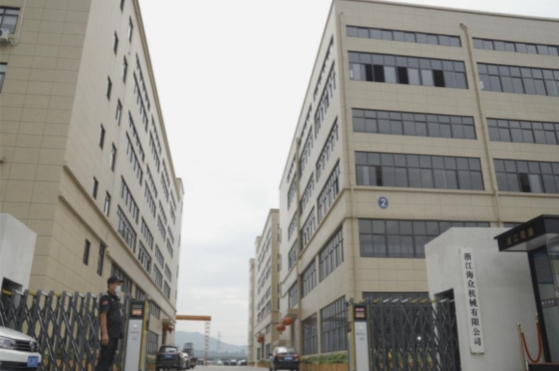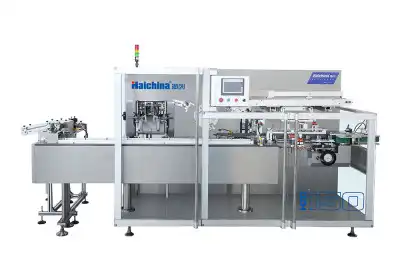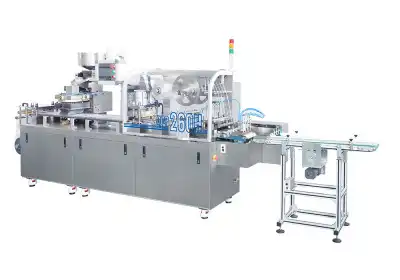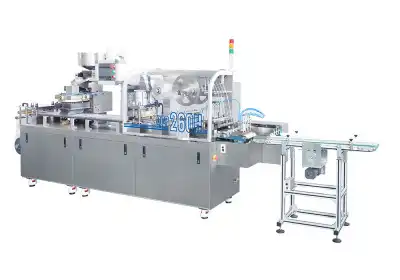Understanding Blister Packaging Machines
Functionality and Applications
Blister packaging machines are versatile devices designed to create individual pockets or cavities for each product unit. These machines excel in packaging tablets, capsules, and small medical devices. The process involves forming a plastic sheet into cavities, filling them with products, and sealing them with a backing material. This method provides excellent product protection and tamper-evidence, making it ideal for pharmaceuticals and consumer goods.
Cost Factors
The initial investment for a blister packaging machine can be substantial. Factors influencing the cost include machine capacity, automation level, and additional features like vision systems for quality control. While the upfront cost is higher, these machines often offer lower per-unit packaging costs in the long run, especially for medium to high-volume production. Maintenance costs should also be considered, as blister machines require regular upkeep to maintain optimal performance.
Long-term Benefits
Despite the higher initial outlay, blister packaging machines offer several long-term advantages. They provide superior product protection, extend shelf life, and offer customization options for different product sizes and shapes. The visual appeal of blister packaging can also enhance product marketability, potentially leading to increased sales and customer satisfaction. These factors can contribute to a favorable return on investment over time.
Exploring Strip Packing Machines
Operational Principles
Strip packing machines operate by sealing products between two layers of flexible packaging material. This method is particularly effective for packaging tablets and capsules in a continuous strip format. The process involves feeding the product between two rolls of packaging material, sealing them together, and cutting the strip into individual doses or predetermined lengths. Strip packing is known for its efficiency in high-volume production scenarios.
Cost Considerations
Strip packing machines generally have a lower initial cost compared to blister packaging machines. This makes them an attractive option for businesses with budget constraints or those just starting in the packaging industry. The operational costs are also typically lower, as strip packing requires less complex tooling and maintenance. However, the per-unit packaging cost can be higher for low to medium production volumes, making it more suitable for high-volume operations.
Efficiency and Speed
One of the key advantages of strip packing machines is their high production speed. These machines can package a large number of units in a short time, making them ideal for mass production. This efficiency can translate into lower labor costs and higher productivity. However, it's important to note that this efficiency is most beneficial when dealing with large production runs of similar products.
Comparative Analysis: Blister vs Strip Packing
Production Volume Considerations
When comparing blister packaging machines and strip packing machines, production volume plays a crucial role. For low to medium production volumes, blister packaging machines often prove more cost-effective in the long run due to their versatility and lower per-unit costs. Strip packing machines, however, excel in high-volume scenarios where their speed and efficiency can significantly reduce overall packaging costs. It's essential to analyze your current and projected production volumes to determine which machine type aligns best with your operational needs.
Product Protection and Presentation
Blister packaging offers superior product protection and visual presentation. Each unit is individually sealed, reducing the risk of contamination and providing tamper-evidence. This level of protection is particularly valuable for pharmaceuticals and high-value products. Strip packing, while offering adequate protection, may not provide the same level of visual appeal or individual unit protection. Consider the nature of your products and their storage requirements when weighing these factors.
Flexibility and Customization
Blister packaging machines offer greater flexibility in terms of package design and customization. They can accommodate various product shapes and sizes, allowing for creative packaging solutions that can enhance brand identity. Strip packing machines, while more limited in design options, offer the advantage of easy dose management, particularly for pharmaceutical products. Assess your product range and future packaging needs to determine which machine type offers the flexibility required for your business.
Conclusion
Choosing between a blister packaging machine and a strip packing machine requires careful consideration of various factors including initial costs, long-term operational expenses, production volume, product characteristics, and packaging requirements. Blister packaging machines offer versatility and superior product protection but come with higher upfront costs. Strip packing machines provide cost-effective solutions for high-volume production but may limit packaging design options. Ultimately, the decision should align with your specific business needs, budget constraints, and long-term packaging strategy to ensure optimal efficiency and return on investment.
FAQs
Which packaging machine is more suitable for small-scale production?
For small-scale production, blister packaging machines are often more suitable due to their versatility and lower per-unit costs in low to medium volumes.
Can both machines handle different types of materials?
Yes, both blister and strip packing machines can handle various materials, but blister machines generally offer more flexibility in material choices.
Which machine type requires less maintenance?
Strip packing machines typically require less maintenance due to their simpler design compared to blister packaging machines.
Expert Packaging Solutions | Haichina
At Haichina, we are a trusted blister packaging machine manufacturer, offering cutting-edge blister packaging machines and strip packing machines tailored to your specific needs. Our state-of-the-art equipment ensures high-speed, low-energy packaging solutions for pharmaceuticals, cosmetics, and food industries. With over 20 years of experience and CE, ISO9001, cGMP certifications, we deliver innovative, high-quality packaging solutions globally. Contact our expert team at [email protected] to explore how our custom packaging line solutions can optimize your production efficiency and product presentation.
References
Johnson, R. (2022). Pharmaceutical Packaging Technologies: A Comprehensive Guide.
Smith, A. L. (2021). Cost Analysis of Modern Packaging Systems in the Pharmaceutical Industry.
Lee, S. H. (2023). Blister vs. Strip Packaging: Comparative Study on Efficiency and Product Protection.
Williams, E. (2020). Innovations in Pharmaceutical Packaging Machinery.
Chen, X. (2022). Long-term Cost Benefits of Advanced Packaging Technologies.
Brown, T. (2023). Sustainability in Pharmaceutical Packaging: Blister and Strip Solutions Compared.





